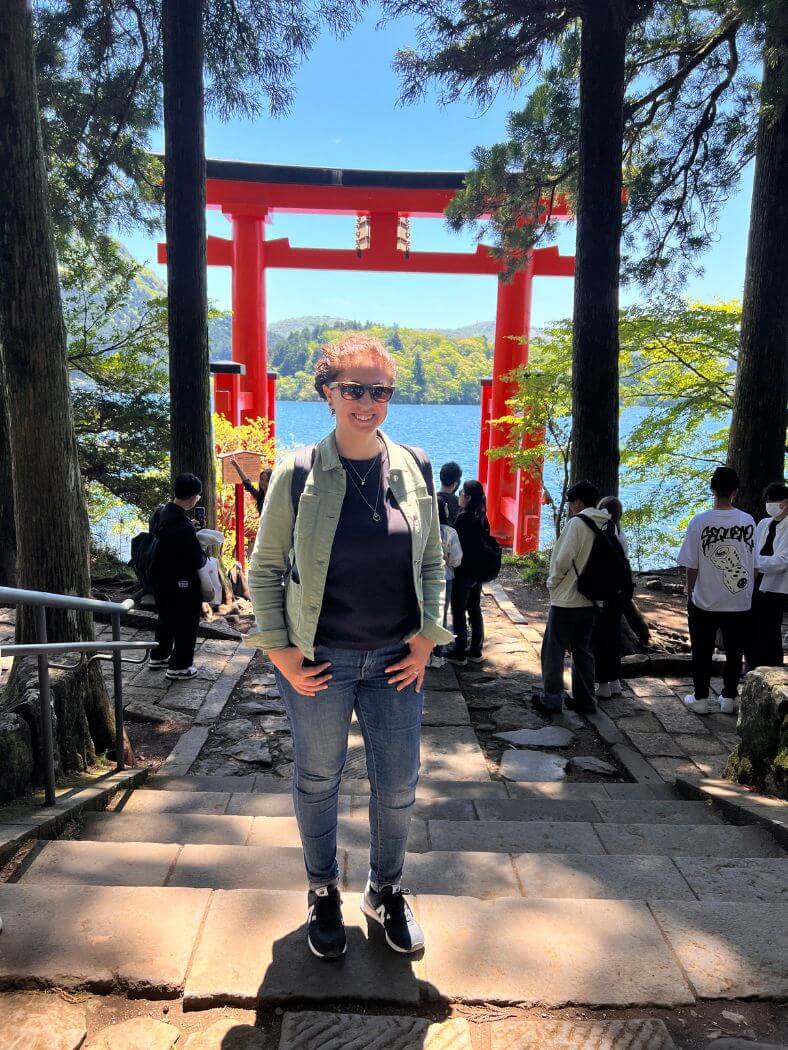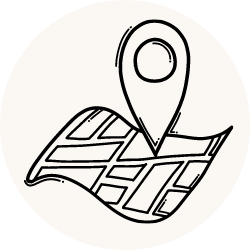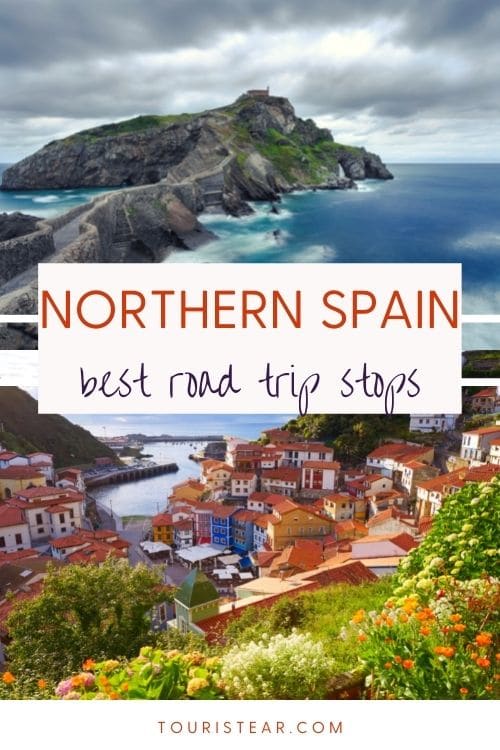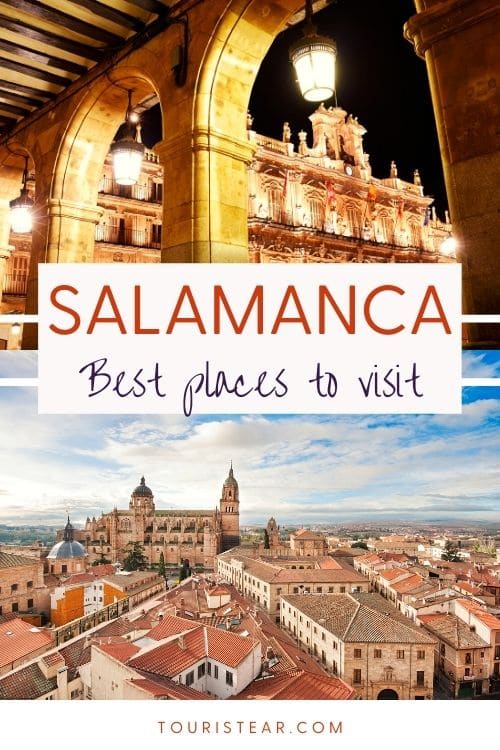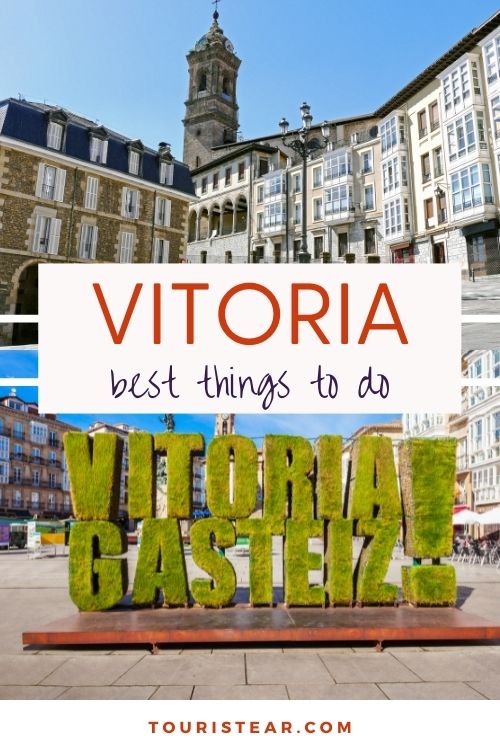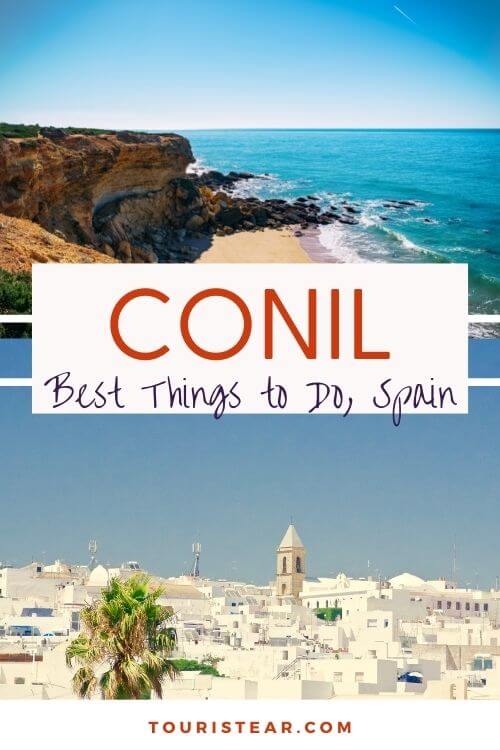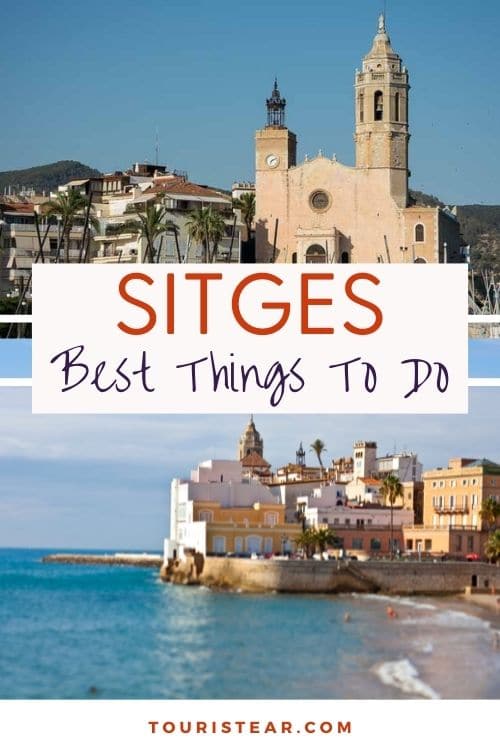Visiting Albarracin, the Most Beautiful Town in Spain
Albarracin is one of the most beautiful towns in Spain. It is located in the province of Teruel in the Region of Aragon, in the northeast of the country.
It is known for its mix of Moorish and medieval architecture and was once the capital of the Moorish Kingdom of Taifa.
Today, its pink and reddish colored buildings and its narrow streets offer visitors a unique experience.
In this post, you will find the 10 best things to do and see in Albarracín. It is an excellent option to visit at any time of the year. A few kilometers from the city of Teruel.
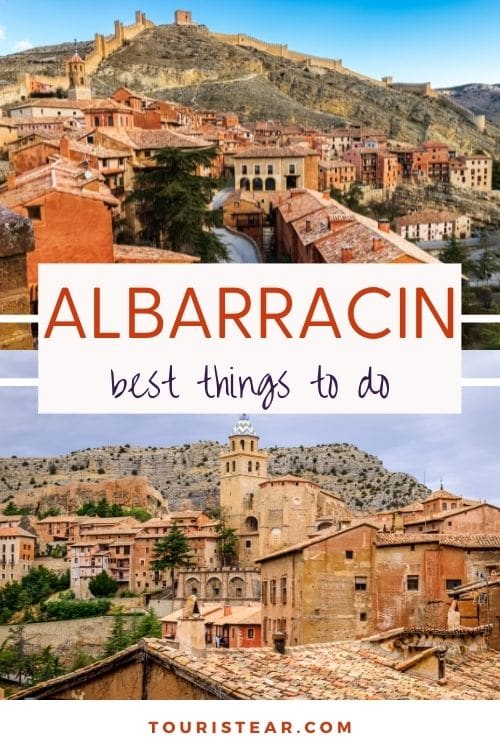
Best Things To Do in the Sierra de Albarracín
Albarracin is located in the Sierra de Albarracín, in the province of Teruel, a few kilometers from the capital (Teruel).
Teruel and this region are a great unknown, so we visited it and were delighted! Do you want to know what to see and do in Albarracín? Continue reading!
Albarracín, the most beautiful town in Spain
The city of Albarracín has been a National Monument since June 1961. It is currently proposed by UNESCO to be declared a World Heritage Site.
For me, the charm of this city is in its reddish-colored town. Full of slopes and roofs that almost touch each other. I can’t recommend you enough for this visit to go in comfortable shoes.
Albarracín is on the list of the most beautiful towns in Spain. Undoubtedly, is essential for all lovers of charming villages.
What to See in Albarracín in 1 day
We arrive in Albarracín a little before lunchtime, so we stop by the tourist office before it closes (2:00 p.m.).
Here we asked for information and picked up a map, and they recommended two itineraries to start with the river walk or through the old town.
We ate at one of the restaurants in front of the tourist office, where we ate the menu cost us about €12 per person. Unfortunately, I have no more references, but I’m sure it can be improved.
Visit Albarracin along the Guadalaviar River Walk
You can start the visit along the river path of the Guadalaviar River, which runs through Albarracín.
To walk along the river, you must wear comfortable shoes and clothes that allow you to move well. At least some sneakers and pants give you freedom of movement.
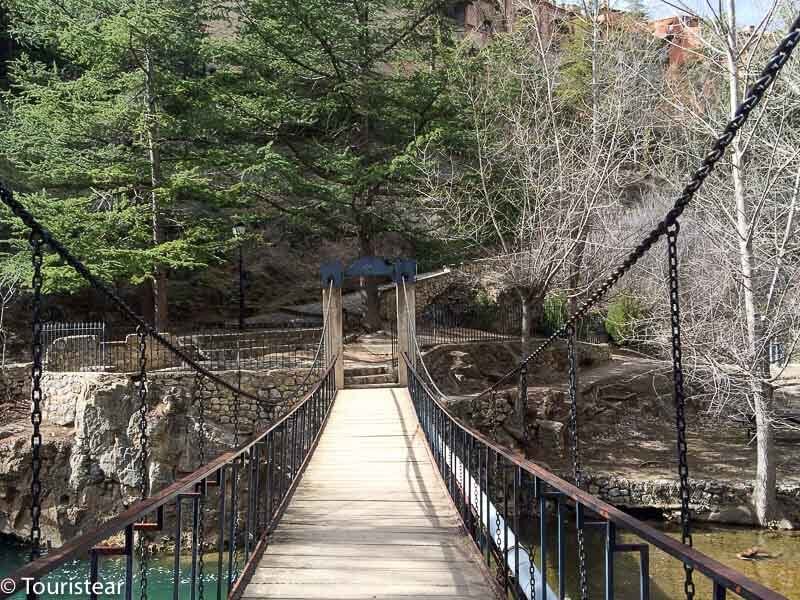
What I liked the most about going along the river was the suspension bridge. Yes, I crossed it a few times. It is ideal for taking photos; the landscape is stunning.
Also, being Friday at noon, we had the whole town to ourselves.
Going all the way around the river will take about 45 minutes or so. All this part is stunning, very green, and it is pretty cool at this time of year, especially when the wind blows.
Visit Albarracín Old Town
Visit the historic old town when you’re done with the river trails. I’ll repeat it, go comfortable!
All the streets of Albarracín are cobbled, and there are many hills, even if you only want to do this part. Going comfortable is my best advice!
The town has a lot of charm, as I mentioned at the beginning, when you take a picture of it, you see a reddish village and the wall is a few kilometers long, yes, I’m not exaggerating.
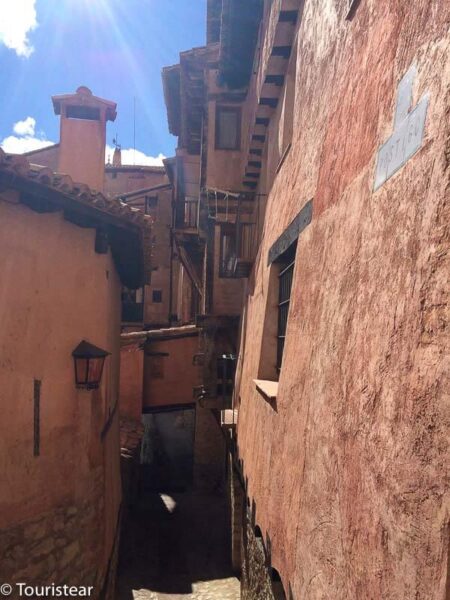
The truth is that everything is very well preserved and it seems that you went back in time, except for the cars and the clothes of the people.
Those of the tourist office recommended we follow an itinerary, but we did a little what we wanted.
Once we reached the town entrance, we started walking, forgetting about the map. Finally, we got into all the streets that caught our attention and let ourselves be carried away by the oh how beautiful!
We saw those alleys with roofs that almost touched each other. Indeed you can cross from one balcony to another without any problem!
Guided tour with a local guide (Only in Spanish)
You have several options for guided tours in Albarracín, from free to private. But, Albarracin is a small town, and they only have tours in Spanish, so if you don’t understand Spanish, you have to do the visit on your own.
Also, I recommend you learn some Spanish phrases or have a translator on your hand.
Free guided tour of Albarracín (only in Spanish): You can do the typical free walking tour of this beautiful town in Teruel with a guide. It will take you through its charming cobbled streets and tell you the story in a fun way.
Guided tour (only in Spanish): You can tour the medieval streets of Albarracín with a guided tour in a small group. The price is around €7.50.
Private tour of Albarracin: if you want to have a guide for you and your companions, you have the possibility of hiring a private tour. The price is around €95 for the whole group.
Albarracin Main Square
Visit the Plaza Mayor, where the town hall is located. The square is very picturesque and is considered the center of the city.
If you find yourself getting lost wandering the city’s labyrinth of winding streets, Plaza Mayor is the place to aim for.
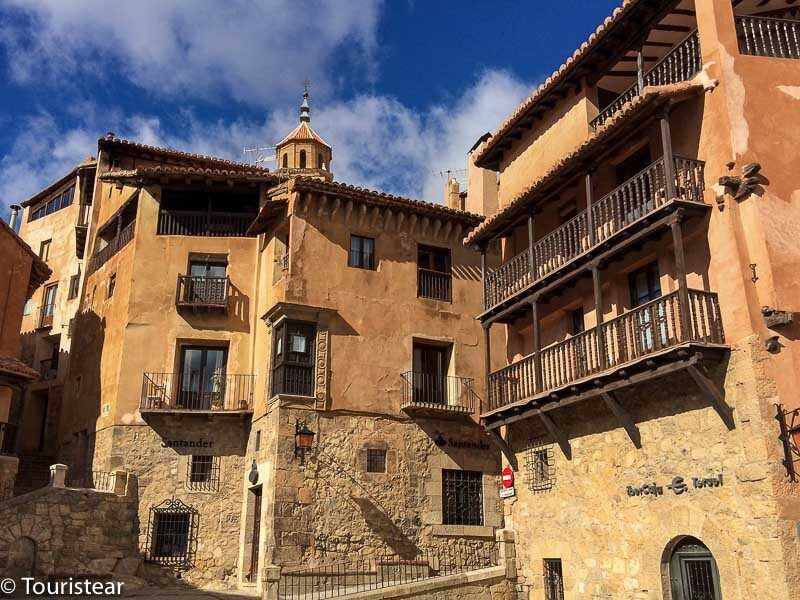
Most of the main sights and museums are easily accessible from this square.
The small square is located in the heart of Albarracín and is home to the Ayuntamiento (Town Hall).
There are also a couple of small cafes with terraces to sit outside. The square is a lovely place to have a coffee or beer and watch the world go by when you need a break from this medieval town’s ups and downs.
The Castle of Albarracin
Perched atop a sheer cliff in the heart of the city’s old Muslim quarter, you can see the Muslim Castle of Albarracín, the ruins of an Alcázar (Moorish castle) dating back to the 9th century when the city was under Islamic rule.
The castle stands at the edge of the town, surrounded by walls, like a fort.
Many of the artifacts discovered during excavations of the castle can now be found in the Albarracín Museum.
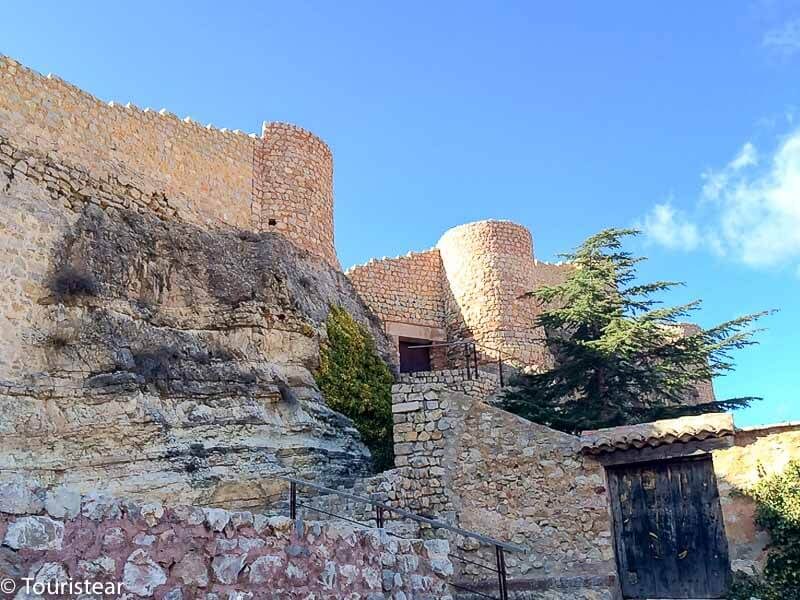
However, on a visit to the castle itself, you can explore the well-preserved ruins of the old fortifications, palace houses, Hammans (Arab baths), courtyards, etc.
There are great city views from the castle’s clifftop vantage point.
The castle can only be visited with a guided tour. The price is €3.50 per person.
During the high season, the tours are usually at 1:00 p.m. In the low season, there are only weekend tours.
Address: Calle San Juan 12E
The Walls of Albarracín
The walls of Albarracín completely surround the historic center of this town in Teruel and form part of the city’s Historic-Monumental Complex.
It was built to protect this town and underwent several extensions throughout its history.
- The first defensive enclosure is from the 10th century,
- later, in the 11th century, an extension of the perimeter of the wall was carried out,
- in the 14th century, improvements and extension works were carried out
- And from the 18th century, it loses its defensive importance.
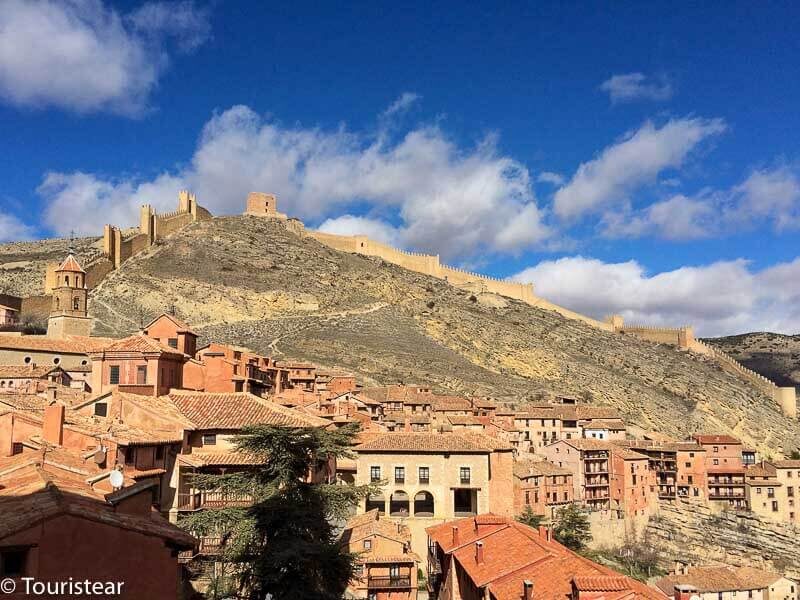
Andador Tower
The highest defensive point of the town of Albarracín, this tower sits on the edge of a small cliff.
The Muslim watchtower was built in the 10th century, and the surrounding walls were added later to protect the town further.
Tower of Doña Blanca
This medieval defense tower has been converted into an intriguing exhibition space on three floors.
Within the 14th-century walls, you can see works by painters such as Ricardo Calero, Gonzalo Tena, and Vicente Pascual.
From the upper terrace, you will get some of the best views in the area.
Portal of Molina
The Molina portal comprises two towers, joined by a semicircular arch. It is located next to the Church of Santa Maria.
Church of Santa Maria
The Church of Santa María was part of the defensive enclosure of the walls of Albarracín.
Initially a Visigothic church, we see today a Mudejar-style church that replaces the original church that burned down in a fire in the 15th century.
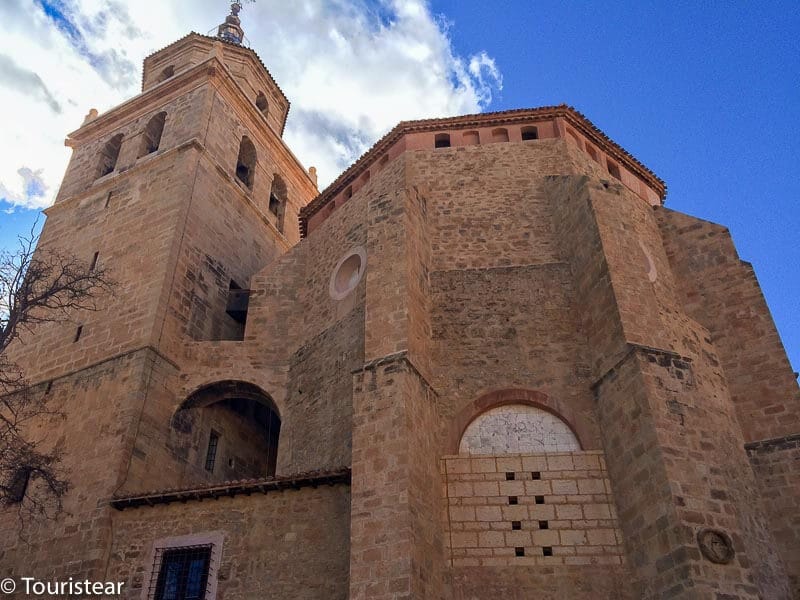
The Cathedral of Albarracin
The Cathedral of El Salvador is the Catholic cathedral of Albarracín and the most important historical building in the city.
Built-in the Romanesque-Mudejar style in the 16th century, then renovated in the Baroque style in the 18th century.
This impressive cathedral has recently undergone extensive restoration to restore it to its original splendor.
The golden altarpiece in the main chapel represents the Transfiguration of Jesus on Mount Tabor and is one of the most important pieces of Aragonese Renaissance art.
The cathedral can only be visited with a guided tour. This lasts 45 minutes and costs €4 per person.
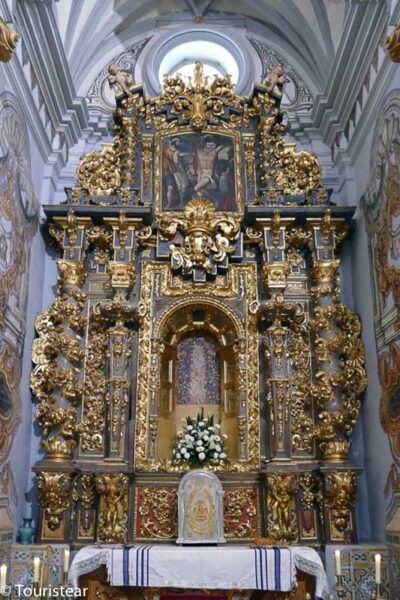
There are morning and afternoon tours after 4 p.m. (Only in Spanish)
You can buy tickets at the Episcopal Palace (the building next to the cathedral).
Address: Plaza la Seo 1.
And well, as I mentioned before, we visited the entire town strolling through its streets, having coffee in the bars that we liked the most or stopping in the middle of the wall to take a photo.
Julianeta House
The Casa de la Julianeta, dating from the 14th century, is one of the region’s best-preserved examples of traditional medieval architecture.
The old house was built with plaster and wood, standard materials of the time, with an unusual shape at the top that makes room for the small street below.
Like most of the buildings in the town, the Casa de las Julianeta was built to fit within the uneven terrain of the cliff.
Today the house is a private residence and a workshop for artists, so, unfortunately, you can’t go inside. But passing by and taking a photo of one of the most famous buildings in all of Albarracín is a must.
Blue House or Navarro House of Arzuriaga
The Blue House of Albarracín draws attention to this reddish-colored town. This house belonged to the Navarro de Arzuriaga family.
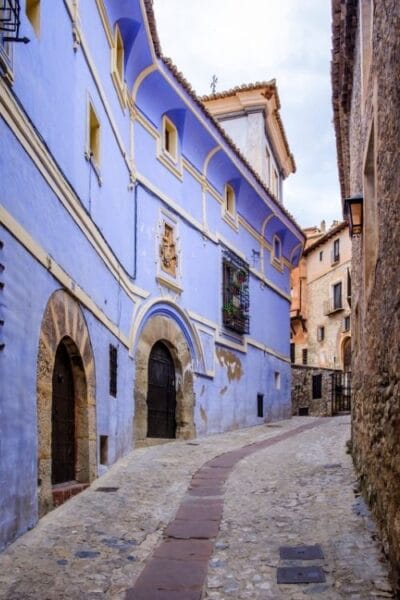
This family became one of the most influential in Albarracín in the 18th century. At this time, the family home was remodeled with neoclassical motifs and stood out from the rest of the medieval town.
Apart from the blue color, the tower with windows is one striking thing about the house. It was built to let in light.
If you want to know a little more about the history and legends of this house, click on this link.
Church of Santiago
The church of Santiago that we see today began to be built in 1600 and was completed in 1626. The tower was built later, and the bricks were added and stands out in the city’s panorama.
And as you can see, it has a slight inclination, like almost all the buildings in Albarracín.
This church is located next to Portal de Molina street, it is believed that it was built on a mosque, but its origin is unknown.
Inside, you have to visit the chapels of San Pedro and San Andrés, see the Renaissance altarpiece of San Sebastián and the main altarpiece from the 17th century.
Episcopal Palace
The Episcopal Palace was the Bishop’s Palace. It is located next to the cathedral. It is the most important residential building in the city of Albarracín.
Currently, the halls and rooms serve as the bishop’s residence house, the Diocesan Museum. I’ll tell you about it further down, in the Museums section.
Rincón del Abanico
As you walk through Albarracín, you will find many picturesque corners, and one that stands out above others is the Rincón del Abanico.
It is located on Calle Portal del Agua, next to the portal of the same name. Here you can see the curious way they had to build the buildings. For example, where the upper floors stand out, and it seems that the buildings will touch each other.
Albarracín Museums
Diocesan Museum
The Diocesan Museum is located in the original noble rooms of the grand Episcopal Palace.
A walk through the 18th-century palace gives you a glimpse of the diocesan way of life at the time (the time when a bishop was appointed in Albarracín to take care of the city).
Today, the palace rooms contain many unique and rare religious artworks worldwide, including a collection of Flemish tapestries from the 16th century and a rather unusual rock crystal fish.
- Ticket price: €3.50
- Address: Cathedral Street, 16
Albarracin Museum
The Albarracín Museum is a local museum that traces the long and fascinating history of the city.
It is located inside a former 18th-century hospital and post-Spanish Civil War prison.
The exhibits date back to medieval times, with valuable pieces from the past of cities under Islamic and Christian rule.
Many artifacts were discovered during the archaeological excavation of the Moorish castle, most notably a pottery collection from the 11th century.
- The ticket price is €3.50.
- Hours are mornings from 10:30 a.m. to 1:00 p.m.
- Address: Calle San Juan 18
House Museum
Pérez y Toyuela Casa Museo is one of the only traditional houses in Albarracín that visitors can visit.
The 17th-century mansion belonged to a wealthy noble family and featured original design and architecture, beautiful period furniture, and historic oil paintings.
Walking through the house gives you a real insight into life in Albarracín during this time.
Don’t forget to head downstairs and see the stables carved into the rock below the manor house—a common feature of buildings in the city.
Address: Portal de Molina Street
Best Views of Albarracín
In my humble opinion, the best views of Albarracín are from the wall.
But you also have magnificent views from the Mirador de la Catedral. Just below the cathedral, you will find an esplanade.
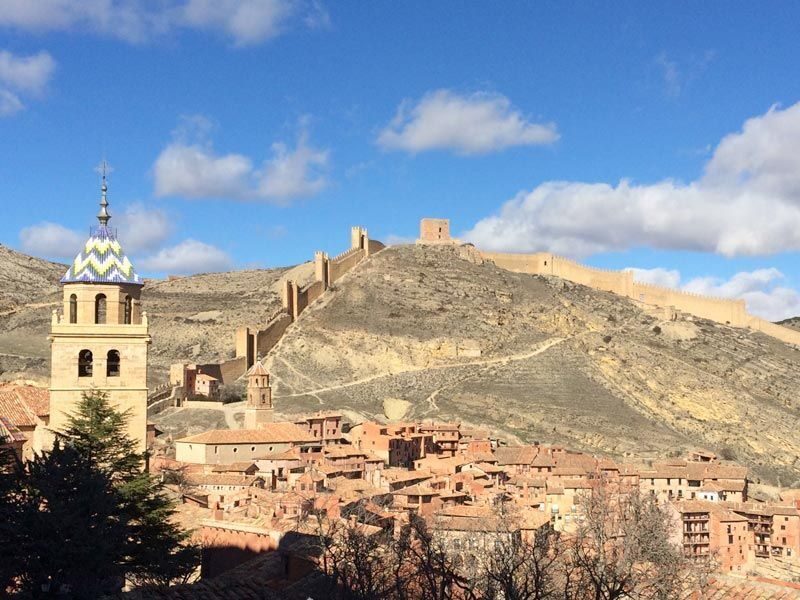
The views are magnificent, and you will see the town with the walls and the Andador tower on top of the hill.
When you walk the river path, you have a detour to the Mirador de Albarracín. From here, you can take one of the typical photos of this ocher-colored town and the colorful tower of the church.
An important place in Albarracín, you have to make this detour yes or yes.
What to See Around Albarracín
Gea de Albarracin
Gea de Albarracín is a town close to Albarracín, and in this municipality, you can see an ancient Roman aqueduct, most of which was carved out of the rock.
We recommend that you visit the interpretation center of the aqueduct, stop by the tourist office and take a hiking route on foot to get to know the surroundings.
In the town, you can visit the Church of San Bernardo, the Convent of Carmen, the Convent of Las Capuchinas, and the Hermitage of San Roque.
Pinares de Rodeno and Cave Paintings
Los Pinares de Rodeno is a natural space of earth color is a space protected by UNESCO.
Its reddish tones are caused by the sandstone and the fallen needles of the large pine trees that cover the area.
The park also boasts many oak trees and majestic golden eagles.
Barranco de la Hoz
The Barranco de la Hoz route is highly recommended. This route joins the towns of Calomarde and Frías de Albarracín, through the Río Blanco Canyon.
It has a distance of 8.5 kilometers and can be done between 2.30 and 3 hours. It is pretty simple to do, yes, you have to go in comfortable clothes and shoes.
The route is linear, so you can start at the point that interests you the most or where you have your accommodation.
Most important places to see on this route
- Morichacho de la Hoz
- Dam of the drowned (Presa de los ahogados in Spanish)
- Covarratiñas Caves
- Arches Canyon (Cañon de los Arcos)
- Molino de las Pisadas
- Waterfall of the old mill
- Ojuelo Fountain
- Hyacinth of Compostela of Calomarde
Source of the Tagus River
The Tagus River (Río Tajo) is the longest in Spain and the Iberian Peninsula. Its source is located in the Sierra de Albarracín.
It is born in Frías de Albarracín and flows into the Atlantic in Lisbon. It is only 38 km from Albarracín; it is easy to get there by car and very well indicated. Do not miss its monument.
Calomarde waterfall
This waterfall is quite close to the city of Albarracín. It is effortless to get there and only a 5-minute walk from the parking lot.
It is about 20 meters high, and the environment is wonderful.
There are many hiking trails in the Sierra de Albarracín, and you can see them here or stop by the tourist office and ask for information. The best thing is that everything is very well signposted.
City of Teruel
Teruel is a very charming city, and despite its beauty, it may be one of Spain’s least visited provincial capital cities. It’s probably because the road network isn’t the best; maybe it’s just me.
The 10 essentials of Teruel are:
- The Tower of El Salvador
- The Neo-Mudejar Stairway
- The Cathedral of Santa Maria de Madiavilla
- The Church of San Pedro and its tower
- The Plaza del Torico
- The aqueduct of the Arches of Teruel
- Enjoy the Mudejar architecture
- The lovers of Teruel
- City hall
- Santa Clara Convent
- Visit Dinopolis
Where to Sleep in Albarracín
Albarracín has accommodation for all budgets; there is a campsite, a youth hostel, hostels, and hotels, so be sure to visit it.
It can be enjoyable to spend a weekend in Albarracín, especially if you want to enjoy nature and everything that the mountains and the town’s surroundings have to offer.
Another option is to sleep in Teruel. Here, I leave you two options that you may like.
Interesting facts about Albarracín
- The official name is Santa María de Albarracín
- It has about 1000 inhabitants
- It is located at 1182 meters above sea level
- It is entirely surrounded by a wall
- The town has an irregular medieval layout
- There are many hills and stairs
- Its cobbled streets are narrow, and the balconies on one side of the road almost touch those on the opposite side.
- Its original name comes from Al Banu Razin, which means the city of the sons of Razin, who founded the Taifa de Albarracín in the 11th century.
How to Get to Albarracin
The easiest way to get to Albarracín from wherever you are is by car.
Driving times to Albarracín from nearby destinations are:
- Teruel to Albarracín: 38km / approx. 35 minutes
- Montanejos to Albarracín: 135km / approx 1 hour 30 minutes
- Zaragoza to Albarracín: 180 km / approx. 2 hours
- Valencia to Albarracín: 180 km / approx. 2 hours
- Madrid to Albarracín: 280 km / approx. 3 hours 30 minutes
If public transport is your only option to travel to Albarracín, take the train to the nearby city of Teruel and then take a taxi.
A taxi between Teruel and Albarracín will cost around €40-50 each way.
Albarracín is considered one of the most beautiful towns in Spain, and they are not wrong! Have you already been to Albarracin? What do you recommend for my next visit?
Last Updated on 22 September, 2023 by Veronica
Disclosure: Some of the links on this post are affiliate links, meaning at no additional cost to you, I may earn a small commission if you click through and make a purchase.
Author: Veronica
Vero, a seasoned traveler, has explored 25 countries and lived in five, gaining a rich perspective and fostering an infectious passion for travel. With a heart full of wanderlust, Vero uncovers the world’s hidden gems and shares insights, tips, and planning advice to inspire and assist fellow adventurers. Join Vero and let the shared passion for travel create unforgettable memories.
